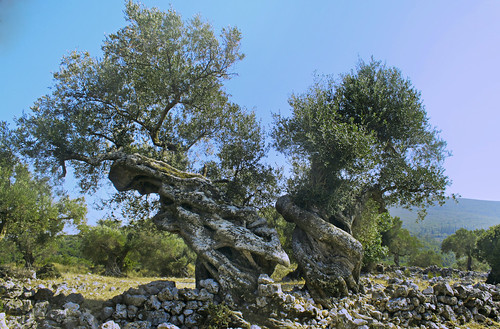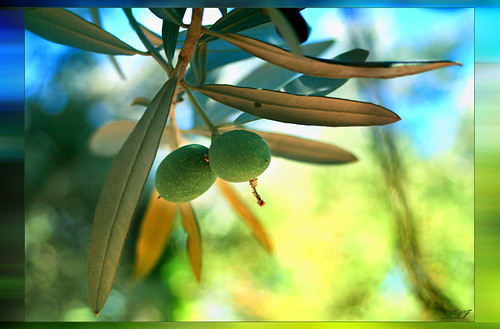Coconut Oils
Coconut (Cocos nucifera) oil is extracted from the meat of coconut and is solid even at room temperature (its melting point is 76°F (24°C). When liquid, it is a clear, transparent oil. When solid, it is white as snow and has a buttery yet slightly grainy texture. It also has a high smoke point of 360°F (180°C). It is a very stable oil and doesn’t go rancid (due to oxidation) very fast.
There are different types of coconut oils with different characteristics. It’s important to know what they are and how to use them.
Virgin coconut oil is coconut oil that has been extracted in a “wet process” is how people in South East Asia make their own oil at home - from coconut milk. Coconut milk is produced by shredding the coconut meat and mixing it with water, and than squeezing the mixture to extract a milk or cream of coconut (depending on the oil content). The oil is than allowed to separate on its own from the water by rising to the surface after 12-24 hours. In this process there is no heat involved for the most part; but some heating may take place after the separation of the oil in order to draw out any excess moisture that can risk spoiling the oil. The resulting oil is very fragrant and flavourful, coconutty oil.
It can be used on its own for moisturizing the skin as well as in cooking. I love using it as a fragrant substitute to butter in desert-type foods – i.e.: on pancakes, waffles and toast with either maple or honey or fruity jams and confitures. It can also be used in baking and in cooking though the smoking point is lower than more refined coconut oils. It is beautiful for sautéing the vegetables for curry, as a substitute for ghee. It is also beautiful as is or if infused with vanilla beans as a pure and simple skin moisturizer: it absorbs fast into the skin and leaves it slightly fragrant.
A less virginal oil is made by a dry process, in which the shreaded coconut meat is dried in the oven slightly to reduce the moisture to 10-12%, and than the oil is pressed from it.
Virgin coconut oil has a unique chemical makeup: although it is made of 92% saturated fatty acids, these are short-chained molecule (with a chain of 6-12 carbon atoms, rather than the long-chained fatty acids which are made of 14 or more carbon atoms), which gives it different characteristics than those of saturated fats from animals or other plants. These fatty acids absorb more readily into the digestive and blood system, providing immediate source of energy to the body.
Virgin coconut oil is also rich in lauric acid, a fatty acid that effectively attacks a variety of virus, fungi and bacteria. In fact, it is present in breast milk and is one of the components that helps to protect babies’ immune system against infections when they are young. Capric acid also has a similar anti-microbial effect (see more info here).
Health benefits of coconut oil can be seen in studies of large populations that use coconut oil as their main source of energy (i.e.: Indonesian people) yet have very low cases of heart diseases.
RBD Coconut Oil is refined, bleached and deodorized, and made from the “copra” (coconut meat that has been dried in either smoke, sun or kiln) and than processed with some heat in a hydraulic press. Than it undergoes a refining process to rid it from any impurities and the result is an oil that has no flavour or aroma of coconut whatsoever. It is used in commercial food, cooking and cosmetic preparations.
Virgin coconut oil and RBD coconut oil have a melting point: 76°F (24°C) and smoke point of 360°F (180°C). They have a shelf life of about 2 years.
Hydrogenated coconut oil is RBD coconut oil that has undergone a further process to make it solid even in warmer countries and has a melting point of 97-104°F (36-40°C). To achieve this, the unsaturated fats in the coconut oil are loaded with hydrogen atoms to make them saturated. Hydrogenated coconut oil is used in food preparations such as chocolate and margarine so that they don’t melt too fast; and also in non-dairy ice creams and mock-chocolate covers for ice-cream bars, etc. It is hardly as healthy as the virgin coconut oil because of the high content of trans fatty acids in it. These acids block absorption of essential fatty acids and raise the bad cholesterol levels in the blood while lowering the good cholesterol - among other negative influences on the body. Trans fatty acids are not present in virgin coconut oil.
Fractionated coconut oil is a fraction of the coconut oil, namely caprylic/capric triglyceride oil or medium chain triglyceride (MCT), and has different qualities than the whole coconut oil. The lauric acid is mostly removed for use in medicine and cosmetics. Fractionated coconut oil is also used medically, in special diets and in cosmetics and body products because of its light weight and fast absorbing texture, transparent appearance and stable consistency (it remains liquid in most climates). It makes for an excellent non-greasy body oil and can be also used as a base for oil and solid perfumes because it has no fragrance of its own, absorbs well into the skin and has a long shelf-life.
Other interesting uses for coconut oil:
- Fuel for lamps
- Soaps and detergents: coconut oil is most valuable in making vegetable based soaps, and creates a soap with excellent lather
- Surfactants for housecleaning products as well as conditioners
- Engine lubricants
- Sexual lubricants (to be avoided with latex condoms) – it also helps to prevent yeast infections
In Ayurveda, coconut is considered cooling and is used to that effect both in massage oils and in foods. Most Indian curries require coconut for the sauce (the meat is crushed along with the freshly roasted spices and sauteed garlic and/or onions). I love coconut in every shape and form and knowing that it is good for my health is just an extra bonus... I like using coconut milk or cream instead of dairy in ice creams. And on hot summer days, I would mix shredded coconut in cool water and eat it as is after it has soaked for a while (sometimes with a few raisins thrown in for some sweetness). I also love adding a tablespoon of grated coconut to savoury rice - it adds a milky flavour and crunchy texture. And of course the best way to it is is fresh, cut into cubes, with a squeeze of lime juice and with some fresh mango cubes; or just suck the fresh young coconut from a straw... A treat that is served in many Thai and Malaysian restaurants in town.











